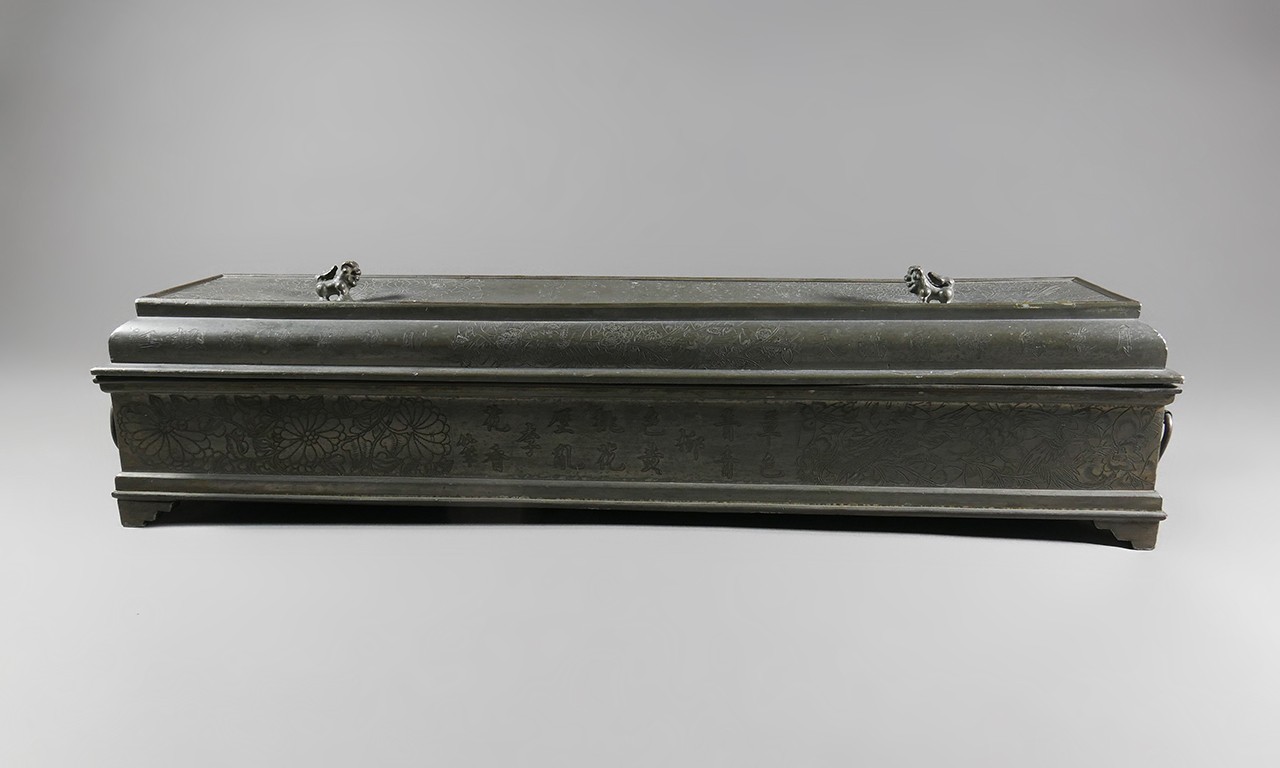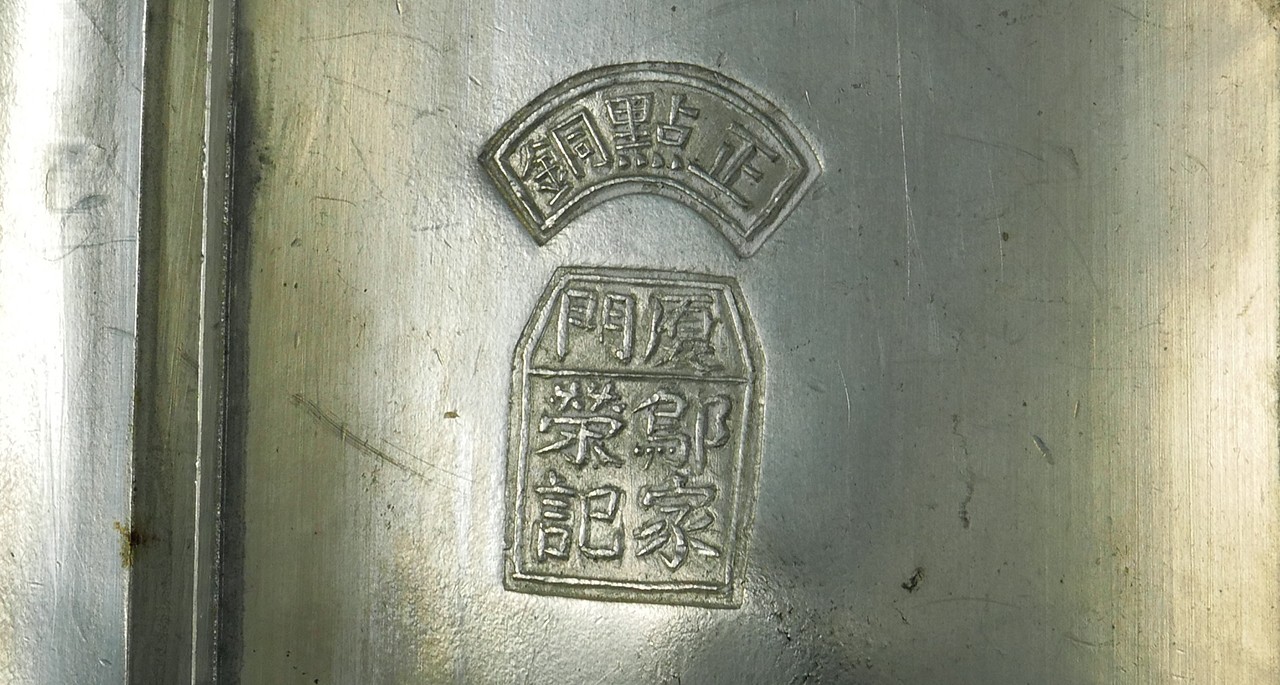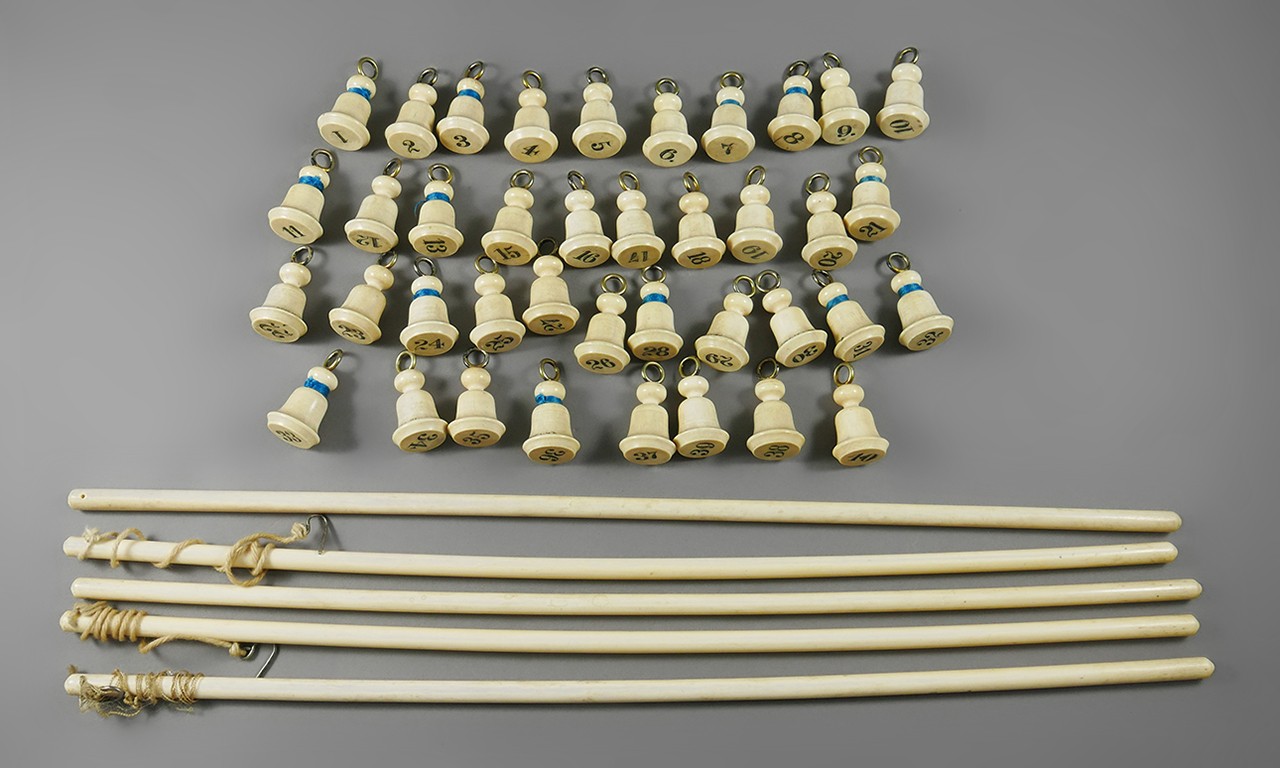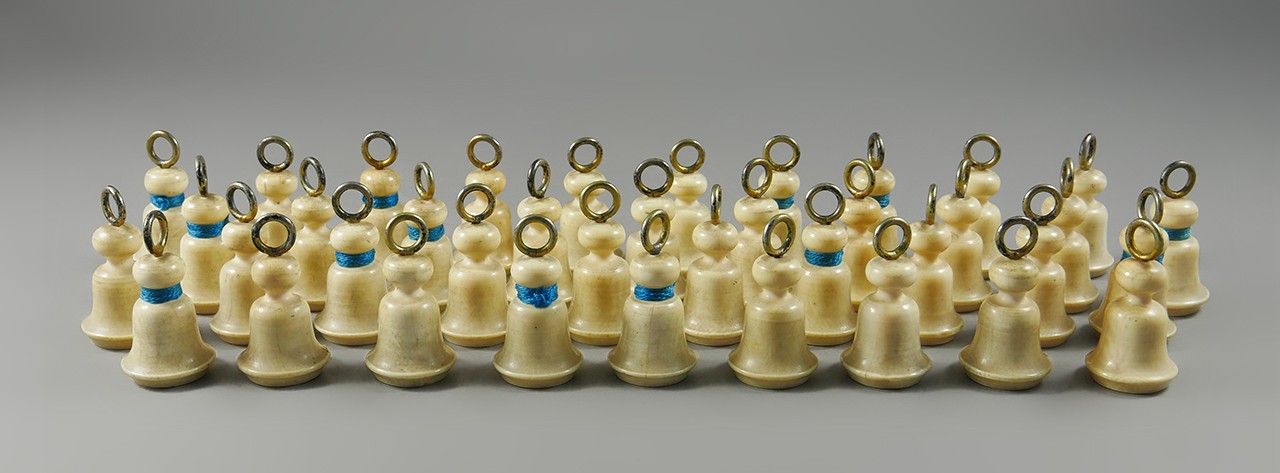 |
Mystery Box, late 19th to early 20th Century
Xiamen, Fujian Province, China
Tin, ivory, felt and string
2019.16.1.1-.47
Gift of Jan G. Wood |
Some Sleuthing Required
Not everything has an easy answer. Previous Bowers Blog posts have explored a range of open-ended mysteries including Native American cogged stones, an apparent relic from the Portola Expedition, and an Egyptian mummy mask with a molded face on the interior. In August of this year the Bowers Museum acquired a mysterious box made of tin and containing ivory pieces. The function of this box was not immediately evident, and theories swirled about it being a series of balances and weights, a puzzle box, or markers used to sell opium. All too often we jump right to identification, but this procedural post follows the torturous path taken to determine how this object was used.
 |
The inside of 2019.16.1.1-.47
Gift of Jan G. Wood |
What’s in the Box
When there is no prior information available on an object and it is not immediately identifiable, any examination begins with the object itself. This box is made of tin and is incised with birds, flowers and a nostalgic Tang dynasty poem written in traditional Mandarin Chinese script. Two small Chinese representations of lions serve at the handles to the box’s lid. On the base of the box a small mark identifies the maker, medium and city of manufacture: Xiamen. The inside is less ornate than the exterior. Partitions create individual compartments for 39 small ivory components resembling weights—each of which are numbered from 1 to 40 in Arabic numerals—and a longer section holds 5 ivory rods, 3 of which have strings and hooks attached.
 |
Detail of the maker's mark for 2019.16.1.1-.47
Gift of Jan G. Wood |
Scaled Production
The first theory as to the object’s use was that the container was part of a traditional Chinese scale set, perhaps even a kit which would have been used to sell scales. Said to originate from Guangzhou, Chinese steelyard balances consist of a pan, a single weight and a beam. Ivory was used as a medium for the beam, and in general the rod would only be perforated at one end, as is the case here. The scales were used to measure a variety of Chinese goods including precious metals, foods and even drugs like opium. There were a few holes in this theory, however. The ivory weights are individually numbered, indicating that multiple weights would be used with one another, however with steelyard balances, only one weight was used. It was instead the position of the weight on the rod that was used to counterbalance the pan and weigh an object. This leads into the second point which is that the rods need to be perfectly straight to assure that their measurements are consistent—all of these rods are curved—and finally, the rods need to be marked with units that show the weight.

 |
The components of 2019.16.1.1-.47
Gift of Jan G. Wood |
A Head Scratcher
Given that the weights were individually numbered with Arabic numerals and that Xiamen was one of the Chinese ports England forcibly opened for foreign trade in 1842, it stands to reason that this object was made for export. Canton was open for foreign trade for longer than any of the other Chinese ports and as a result had become a major production center for export goods, including puzzles made for British audiences. Often coming in similarly partitioned sets and featuring ivory components these mysterious mechanisms each came with their own complex solutions. While this being a Chinese puzzle for an English consumer provided answers for many of the issues that arose from this object being a weight set, the issue with this theory lay in finding a puzzle that matched these components. None was ever found because none existed.
 |
A school of fish, 2019.16.1.1-.47
Gift of Jan G. Wood |
Go Fish
The correct answer finally came from the Bowers Museum’s Collections Manager. While photographing the mystery box and its components, she oriented a rod to set up a shot and noticed that the metal hook at the end of the string could be used to pick up the weights. This has been previously considered, but she went a step further and noted that it was not too dissimilar from the magnetic fishing game kids still play today in which rods with magnets at the end are used to fish for toy fish. She raised the possibility for the first time that this could be a game. And after conferring with experts in the games of Victorian England, this is assuredly the case. Multiple versions of the game existed, going by titles such as “The Expert Angler” and “The Game of Fish Ponds” but the rules are mostly the same. It was played with either four or six players, each with a “pond” of a handful of the numbered pieces—or fish—and with a larger central “pool” of fish. Players had to alternate between using their comedically small fishing rods to catch fish from the pool and their opponents’ ponds. When they caught a fish, they shouted “caught” and had to correctly guess whether the number beneath was even or odd. Whoever had the most fish when a pool or pond was emptied was the winner. If it was a tie, the player with the highest valued fish among them won.
Text and images may be under copyright. Please contact Collection Department for permission to use. References are available on request. Information subject to change upon further research.







Comments